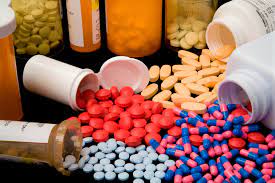Shared by our friends at Hennepin County
Hennepin County’s Opioid Response Coordinator’s Message:
Opioids: Why now is the time to talk
If someone has a substance use disorder (SUD), research says it takes about 40 supportive interactions before they’re ready to start thinking about treatment options.
Anyone can have those conversations, says Opioid Response Coordinator Julie Bauch. Right now, those conversations are more important than ever, because the opioid crisis is worse than ever. Bauch says, “I want to validate that if things feel heavy and overwhelming it’s because they are.”
Many Human Services staff can feel hopeless and discouraged as they see residents struggle. While all SUDs are serious, we call out opioids specifically because “this kills people faster and at higher rates,” Bauch said. From 2019 to 2020 there’s been a 68 percent increase in opioid-related deaths in Hennepin County. The biggest culprit is fentanyl, a synthetic opioid that’s 50 to 100 times more powerful than morphine. Illegally made fentanyl is often added to drugs that people buy on the street, which can easily lead to overdose. In 2020, more than 80 percent of the opioid-related deaths in Hennepin involved fentanyl. And then there’s COVID-19. Many community supports that people use, such as group meetings, haven’t been available. Facilities have changed their admission criteria. The harm reduction model – where people who are using substances are asked never to do it alone, so there’s someone to provide or get help in case of an overdose – “COVID changed that,” Bauch said. But there still are supports available to people. “Everything we were doing pre-pandemic we continue to do,” she said, including:
• Syringe exchange and naloxone distribution is available through NorthPoint Health & Wellness and the Public Health Clinic at the Health Services Building. (Naloxone, or Narcan, is a medication that can quickly reverse an opioid overdose.) Find more services at www.hennepin.us/addictionhelp.
• Outreach teams engage with people directly in the community, building relationships and providing care coordination and options.
• People held in jail or sentenced to a county correctional facility have access to buprenorphine – a medication used to treat opioid use disorder – and receive education and naloxone when they leave.
• Health Care for the Homeless provides buprenorphine and outreach on the streets and linkages to ongoing care.
• Hennepin County first responders carry naloxone and are trained to use it.
• Withdrawal management support and treatment connections continue to be available through Behavioral Health.
• The Mental Health Center can connect people they see for mental health care to substance use treatment as well.
• The DART (Diversion and Recovery Team) program provides coordinated case management, including counselors and peer recovery specialists, for people dealing with severe and chronic SUDs.
Anyone can share information about these “touchpoints” with someone who might be ready to think about a change – but there’s no script for talking about it. “I think it sounds a lot like, ‘I’m thinking about you, I care about you, whenever you’re ready to talk, I’ll check on you tomorrow and next week’ – and keep asking,” Bauch said. She understands how staff can become discouraged, but “continued engagement is critical. It’s devastating to lose clients to an opioid death, to watch families and individuals struggle, but we can still continue to check in and be a safe person in their life with a trusting connection.”

